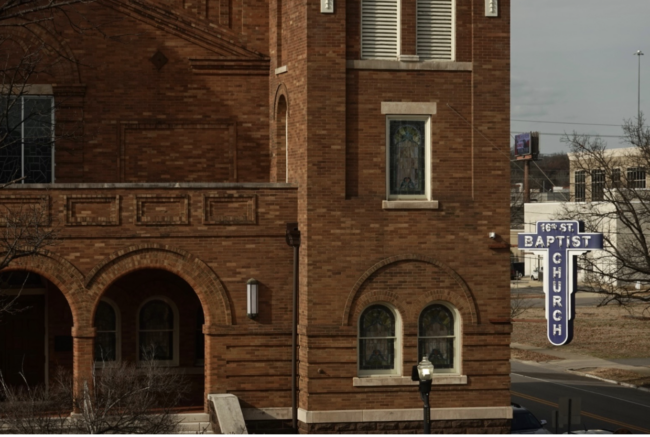After missing the previous Thursday and Friday, many tired but enlightened students returned to school on Monday, February 2. They were not skipping, of course. Rather, they’d opted into the annual Fieldston trip to Alabama to learn about the Civil Rights Movement and the national legacy of mass incarceration. At 5:00 AM that Thursday, the students embarked on a four-day journey to three major cities in Alabama and Georgia. I was fortunate enough to be one of those students. The trip was a mix of learning and reflecting that reframed past knowledge from classes and combined it with heart-wrenching new information. To help cope with the intense periods of learning, we traded in our electronics for pencils and notebooks. Every day, we discussed and processed what we learned and how we felt.
Though Fieldston has offered this trip for many years, the invitation was extended for the first time to students from Landmark High School, a small progressive public school located in Chelsea, New York. The idea to include them blossomed as Dr. Tinia Merriweather prepared to teach her Educational Inequity class. Considering how ironic it is to teach a class about educational inequities to private school students, Merriweather contacted Shannon Guglielmo, who wanted to introduce an ethics class to Landmark. The two classes met and learned together a few times, and soon Merriweather decided to invite the Landmark students to Alabama. While there were doubts about feasibility, the Fieldston community pulled through and raised over $9,000 on GoFundMe. The trip totaled out to 21 students and seven chaperones from Fieldston and seven students and two chaperones from Landmark. Sahil Chauhan (Form V), who was in the Educational Inequity class, says, “It was really amazing that we were able to have [the Landmark kids] on the trip, and it meant a lot that we could learn together.”
The other new aspect of the trip was the day spent in Birmingham. First, we visited the Birmingham Civil Rights Institute, which is a part of the Birmingham Civil Rights National Monument. Then, we crossed the street to take a tour of 16th Street Baptist Church, the place where four young Black girls were killed in the 1963 racially motivated bombings. For me, this stop was the most personal of the trip. We heard about the lives of Addie Mae Collins, Denise McNair, Carole Robertson and Cynthia Wesley from congregation members who know girls’ families personally. We also learned about events that day that didn’t receive media attention: Addie Mae’s younger sister Sarah lost an eye in the bombing but survived and is still a member of the church. Two young Black boys, Johnny Robinson and Virgil Ware, were lynched on the same day. The first day concluded with a visit to Sloss Furnaces, a company that leased incarcerated Black men who labored in the mines. Sloss is one of the many convict leasing sites studied in the History of the U.S. Criminal Legal System Class.
The next three days followed the same schedule as previous years. The first day in Montgomery was spent with the Equal Justice Initiative (EJI)—an organization focused on protecting prisoners’ rights while fighting for racial and economic justice. Their main museum is about the history of racial injustice toward African Americans and is divided into four sections: Slavery, Terror, Segregation and Mass Incarceration. The museum was beautiful—and definitely the most emotional. After, we went to EJI’s sculpture garden and national lynching memorial. Then, we spoke with Charlotte, a lawyer who works for EJI. Her powerful description of her work influenced many students to want to pursue law, especially with a focus on defense.
The next day, students walked around exploring additional museums in the area. Our final stop in Montgomery was the Mothers of Gynecology monument. The exhibit memorializes Anarcha, Lucy and Betsy, three enslaved teenage girls who were subjected to surgeries without anesthesia on their reproductive organs by “the father of gynecology,” J. Marion Sims. There, we met artist Michelle Browder and her brother and got the first look at an upcoming project of hers. We concluded the trip on Sunday by attending a service at Ebenezer Baptist Church. Both Martin Luther King Sr. and Jr. were pastors at Ebenezer, and the current pastor is a Senator of Georgia, Reverend Raphael Warnock.
This trip was an amazing experience that left students fueled with emotions, including the hope for change. There are a thousand little details that I didn’t have space to mention, and probably a thousand more at the museum I missed. Attending again would leave me with even more to learn. Vera Koontz (Form V), who also attended last year, told me she is “extremely grateful that [her] second time having this experience was just as rewarding as the first—and in an entirely new way.” I encourage current juniors and sophomores to think about what they want from the world and consider going on the trip next year.






